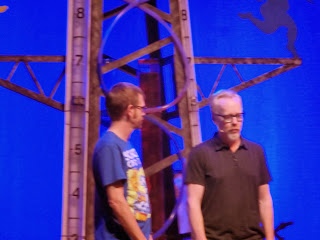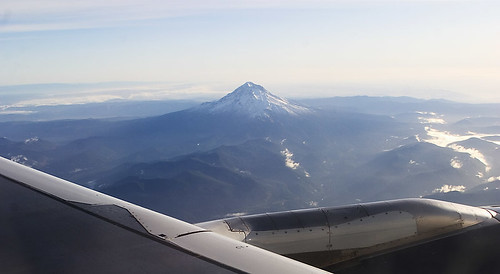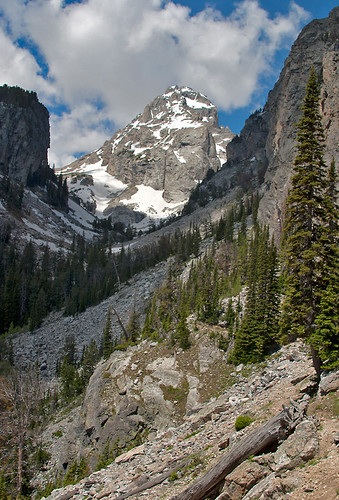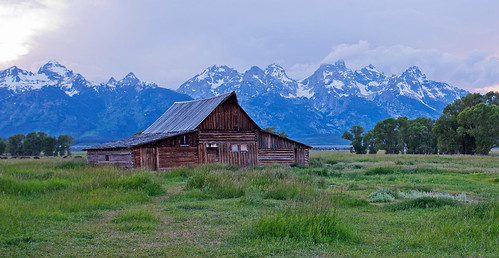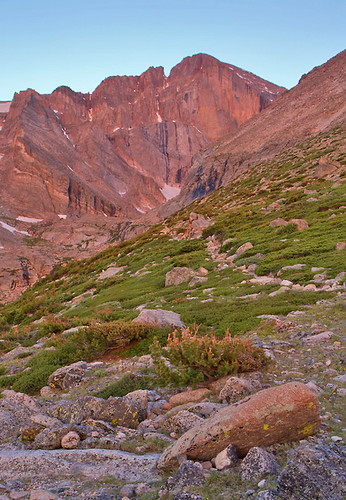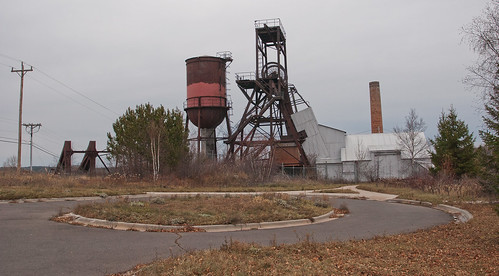Gold. It's at the heart of nearly every Fantasy trope. It's what any reasonably complex fantasy economy is based on. Aside from the fact that the amount of gold portrayed in "The Desolation of Smaug*" might represent more gold than has ever been mined on Earth, gold is the great shiny, malleable, dense
MacGuffin of fantasy.
So where does gold come from? Without going into stellar nucleosynthesis, suffice to say that the bulk composition of Earth's crust contains very little gold. But there are geologic processes that concentrate gold into economically important spots. Places where there is enough gold to dig it out of the rock, or to find it weathering out and washing through streams as little flakes or nuggets. Most of the gold deposits on Earth are the result of two things: 1) really, really hot rocks and 2) really, really hot water.
The popular notion is that our tectonic plates float on an ocean of molten rock. This is not true. Most of the rock that makes up the Earth's crust and mantle are solid - although in the lower crust and the mantle they are hot and under great pressure. Enough heat and pressure to allow them to bend and flow like silly putty instead of crack and shatter like the rocks we're familiar with. But in places where the rocks of the lower crust and upper mantle are affected by other things, these rocks can - and do - melt. Although by "melt" I'm not talking about an orange, syrupy stream - rather it's a mixture of liquids and solid crystals - kind of like a slushy (albeit a two-thousand degree slushy that should come with more than just a "Caution Contents Hot" warning).
Melts are commonly associated with processes that either bring very hot mantle rock near the crust (hot spots), places that lower the confining pressure on the hot lower crust and upper mantle (rifts and spreading zones), or bring water and carbon dioxide to the upper mantle and lower the melting point (flux melting along subduction zones).
As the melt rises (it is less dense than the surrounding solid rock), it begins to cool. If it reaches the surface while molten, a volcano will form. But within the crust, there is far more melt than can reach the surface. And this melt, cooling within the crust, begins to change. Minerals form (or existing minerals might grow larger) within the melt.
Grabbing the materials they need to form stable crystalline molecular structures. Iron, Magnesium, and Calcium are first - bonding with a few silicon and oxygen atoms to form mafic minerals like Pyroxene and Amphibole. As those mafic minerals solidify and the melt cools further, Sodium, Potassium, and Aluminum are grabbed, forming felsic minerals such as Potassium Feldspar and Mica. If these metals aren't available, the Silicon and Oxygen will form Quartz (SiO
2). All the while, what is left in the melt becomes enriched in elements not easily used in these minerals.
A bowl of assorted candies is often reduced to the least popular flavors after being left out in the break room. At first, the proportion of sour-apple-mango is low, but as people pull out the cherry, orange, lime, the remaining candy becomes a super-rich mixture of unwanted taste sensations. Now the snack scavenger must decide how hungry they are and weigh the benefits of that sugar rush with the cost of having one's mouth taste like scented dish soap for the remainder of the afternoon.
The elements left behind in the melt - those that are not easily incorporated into the common rock-forming minerals - are like these unwanted candies. These are the "incompatible" elements. Elements that tend to be shunned - and concentrated - in melts that mostly crystallized the popular elements together.
Within these incompatible elements lies gold. Despite all of its desire by humans, it's relatively unpopular in the mineral world. As the melt finishes solidifying, these incompatible elements start forming really wacky minerals - the gold atoms start hanging out together and form gold crystals - sometimes in solid solution with silver and a few other metals.
Although igneous activity - melts cooling deep within the crust is easy enough to imagine, most gold found on Earth is associated with hydrothermal activity (very high temperature groundwater systems). Water - either forced out of the melt solution as it crystallizes - or that infiltrating from somewhere above can be heated to very high temperatures by the rocks (or nearby melts) deep in the crust. The pressures at this depth are tremendous - and the water does not boil into steam. Instead, these hot fluids interact with the surrounding rocks, leaching some of these minerals and dissolving them. Sulfides, gold, and quartz are easily picked up by these fluids as they pass around and through the gold-bearing rocks. These fluids are under tremendous pressure - and they can force their way into small fractures, or create new fractures for the fluids to move into.

Hydrothermal Gold: Fluids (blue lines) moving through country rock are heated by a melt, collecting incompatible elements like gold (yellow dots), transporting them to a region where they are precipitated in fractures (black zig-zags).
As these hydrothermal fluids get closer to the surface, however, the pressure can drop - either by fractures opening up and making more space, or by getting close enough to the surface for some of the fluid to flash into steam. When the pressure drops, the minerals can precipitate out of solution, sometime very quickly - much like the way steam pipes acquire a coating of lime and scale as the dissolved minerals precipitate when the water changes from liquid to gas. These precipitated minerals form a dense mixture of quartz, sulfides and gold crystals lining the fractures they were forced into. These fractures, now filled with minerals brought in by hydrothermal fluids are called veins. In some instances, the gold crystals within these veins can be very large. In other cases the gold crystals are very tiny an must be dug out in bulk and crushed up, allowing chemical processes to leach the other minerals away.

Most of the gold produced in the US today looks like this. It's then crushed up and the other minerals are leached away to reveal the gold.
So where does that leave us with our paleo-continent of Rhovanion? If we consider the Lonely Mountain as a major gold-bearing feature of this continent, an extinct volcano seems an unlikely place to find the gold. The better spot would be the magma chamber beneath it, encircled by hydrothermal fluids, concentrating the gold into veins and big blobs. That suggests what is described as the Lonely Mountain isn't a volcano at all - at least not the surface expression of one. Rather, the Lonely Mountain is the once beating heart and associated viscera of a long-gone volcanic system. And what better place for a volcanic system than a subduction zone?
Subduction zone volcanic island. Bonus economic geology features include accretionary wedge (blue) and igneous intrusion into carbonate reef (purple) to form skarns
Next up: Iron, tectonics, and exhumed mountains!
*Speaking of which,
Rhett Allain over at Dot Physics has a great post about the amount of gold in Smaug's horde.
For a complete overview of this series:
Part 1:
http://pascals-puppy.blogspot.com/2013/12/unnatural-histories-lonely-mountain.html
Part 2:
http://pascals-puppy.blogspot.com/2013/12/unnatural-histories-lonely-mountain_16.html
Part 3:
http://pascals-puppy.blogspot.com/2013/12/unnatural-histories-lonely-mountain_9632.html
Part 4:
http://pascals-puppy.blogspot.com/2013/12/unnatural-histories-lonely-mountain_1042.html
Part 5:
http://pascals-puppy.blogspot.com/2013/12/unnatural-histories-lonely-mountain_5911.html

















